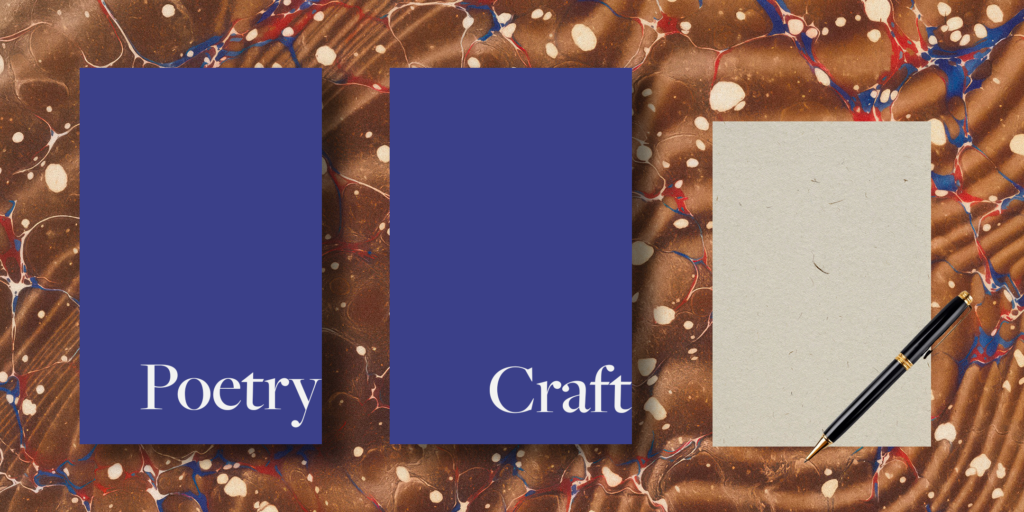As part of our Poetry Craft series, Tristram Fane Saunders discusses why understanding music can improve your poetry writing.

In what ways can poetry be considered a form of music?
Listen to a poem in a language that you cannot speak, and very often you’ll come away with a strong sense of the emotion behind it. All poets are singers; all poems are songs. What sets poetry apart from other kinds of literature is a shared understanding that the sound is a central element of the meaning.
Of course, some performances of poetry are intensely musical, depending for their impact on a host of musical effects – variations in pitch, speed, accent, etc. I’m thinking of readings as different as Jay Bernard’s many-voiced, theatrical Surge; TS Eliot’s at-home performances of ‘The Waste Land’ (‘He sang it & chanted it [&] rhythmed it,’ as Virginia Woolf wrote in her diary); Luke Wright’s boozy barroom ballads; Kurt Schwitters’ dadaist barrage ‘Ursonate’, and the dub poems of Linton Kwesi Johnson.
But, for the most part, this course is not about that. Our main focus is not on poetry performed by the poet, but something subtler: how a poem can communicate a melody in silence, across miles or centuries, straight to the listener’s inner ear.
A page of sheet music isn’t silent; it contains written cues that create rhythms and melodies in the inner ear of the attentive reader. The same is true of a page of poetry. This course will explore those cues, and how we can use them.
We’ll look at tools intrinsic to the language (such as lexical stress) and tools extrinsic to it (line-break, the mise-en-page), as well as exploring ways to use punctuation as a kind of musical notation.
Can you talk about how meter in poetry mirrors musical beats and phrasing?
Some readers instantly recoil from the word ‘meter’. It’s a natural, justifiable response to painful memories of bad teaching in school. For decades, weary students have had the phrase ‘iambic pentameter’ bludgeoned into them, without first being told anything about where meter comes from, how to hear it, or how to play with it. It’s as backwards as teaching someone to spell the word ‘rhytidome’ without first telling them the difference between a herb and a tree.
For the last half-millennium, most poetry in English has made just one of two noises; this course begins by explaining how to tell one from the other. Or, if you like, sorting herbs from trees. (Co-incidentally, as I’ll explain in class, for the last half-millennium, most popular music in Europe has also made one of two noises; the comparison is inexact, but useful.) Borrowing the vocabulary of music – beats, cadence, phrasing, timbre – can help to reach a more intuitive understanding of meter in poetry, by approaching it first as listeners, and then as writers.
How can studying rhythm deepen a poet’s understanding of line breaks?
In a hundred ways, through a hundred tricks, but here’s just one example: once you’re able to muck about with rhythm confidently, you can use your line-breaks to tell the eye one thing while telling the ear something else.
The late John Burnside, for example, loved doing this. His line-breaks could brilliantly disguise or cut against a poem’s rhythm. The eye would see a page of broken half-lines, but the ear would hear a consistent rhythm anchoring the whole thing – a hidden melody ringing beneath it all. The listener is left with a feeling of connectedness, which is what so many of his poems strive towards.
The eye is a shortcut to the brain; the ear is a shortcut to the heart. Play them off against each other, and you can make your readers think a poem is one thing, while feeling that it’s another.
Tristram is running his course Radical Rhythms with us this Autumn, this course is currently sold out, to get on the waiting list email [email protected].

Tristram Fane Saunders is the author of Before We Go Any Further (shortlisted for the 2024 Seamus Heaney Prize), and editor of Edna St Vincent Millay: Poems and Satires. His poems have appeared in journals including The TLS and The White Review, and he has judged the Forward Prizes and Costa Prize for Poetry. He was The Telegraph’s poetry critic from 2017-2024, has reviewed poetry for Radio 4’s Front Row, and is currently a Fellow Commoner in the Creative Arts at Trinity College, Cambridge.
Add your Reply
You must be logged in to post a comment.